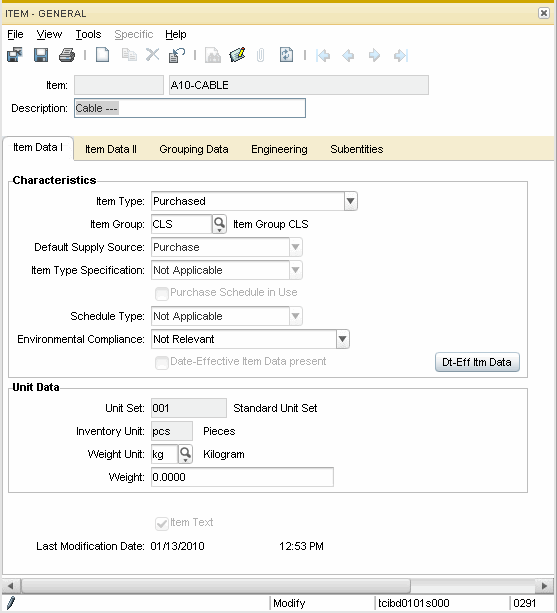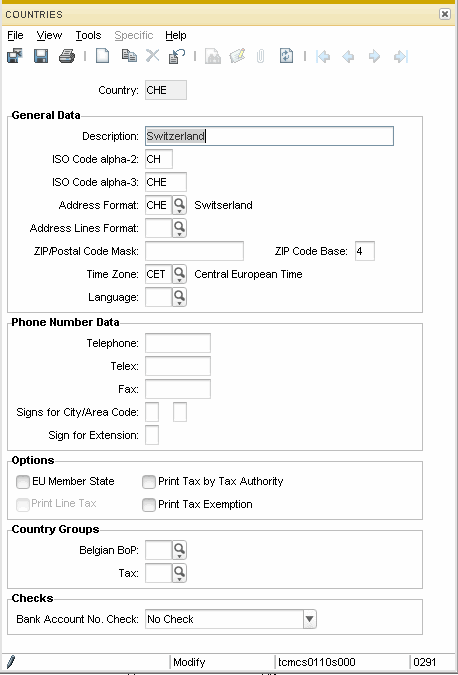FormsThe form is the user interface part of the session. Forms, which are presented to users, include data and actions that users can perform on that data. The session and form are integrated; one form per session is defined. The form definition in the session identifies the fields, labels, and options that are available in the session's overview display window and details window. Example Field groups allow certain fields to be displayed together within a box, or within a tab. The Item – General session contains more than one tab.  Item - General Example Some sessions can fit all their fields on one tab, like the Countries detail session.  Countries A Form provides the rules for the user dialog, or panel, that is displayed. You create and edit sessions and forms using the Sessions (ttadv2500m000) session. This session acts as a Developer’s workbench as it provides access to all the major components of a session. To create forms To create and edit forms, you must use the Infor Dynamic Form Editor that is part of Development Tools. This is a PC based application that should be installed for each developer. The Infor Dynamic Form Editor also provides access to the major components of the session. The form editor allows you to specify the available session types for the form (overview and detail), the field groups, labels and fields that are used to create the form. The form that is presented to the user is created dynamically:
For details, refer to For more information, refer to the following topics in the Web Help:
| |||